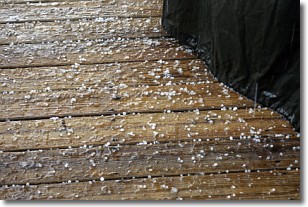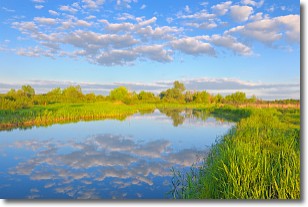Weather Alert in Ohio
Flood Warning issued April 3 at 3:39PM EDT until April 8 at 11:36AM EDT by NWS Cleveland OH
AREAS AFFECTED: Sandusky, OH; Wood, OH
DESCRIPTION: ...The Flood Warning is extended for the following rivers in Ohio... Portage River At Woodville affecting Wood and Sandusky Counties. Black River At Elyria affecting Lorain County. Eagle Creek At Phalanx Station affecting Trumbull County. ...The Flood Warning continues for the following rivers in Ohio... Maumee River At Waterville affecting Wood and Lucas Counties. Eagle Creek Above Findlay affecting Hancock County. ...The Flood Warning is cancelled for the following rivers in Ohio... Huron River Near Milan affecting Erie County. For the Portage River...including Woodville...Minor flooding is forecast. For the Huron River...including Milan...Moderate flooding is forecast. For the Black River...including Elyria...Minor flooding is forecast. For the Maumee River...including Grand Rapids, Waterville...Minor flooding is forecast. For the Eagle Creek (Hancock)...including Findlay...Minor flooding is forecast. For the Eagle Creek (Trumbull)...including Phalanx Station...Minor flooding is forecast. * WHAT...Minor flooding is occurring and minor flooding is forecast. * WHERE...Portage River at Woodville. * WHEN...Until late Tuesday morning. * IMPACTS...At 11.0 feet, Water encroaches upon State Route 105 in Sandusky County. Water near homes on Water, Bierley, and Bridge Streets in Pemberville. The river floods Trail Marker Park up to Erie Street in Woodville. * ADDITIONAL DETAILS... - At 3:30 PM EDT Thursday the stage was 11.2 feet. - Forecast...The river is expected to rise to a crest of 11.5 feet this evening. The river will fall Friday but is expected to remain above minor flood stage before rising again Saturday into Sunday. It will then fall below flood stage early Tuesday morning. - Flood stage is 9.0 feet. - Please visit www.weather.gov/safety/flood for flood safety and preparedness information
INSTRUCTION: Motorists should not attempt to drive around barricades or drive cars through flooded areas. Turn around, don't drown when encountering flooded roads. Most flood deaths occur in vehicles. Additional information is available at www.weather.gov/cle. The next statement will be issued this afternoon at 445 PM EDT.
Want more detail? Get the Complete 7 Day and Night Detailed Forecast!
Current U.S. National Radar--Current
The Current National Weather Radar is shown below with a UTC Time (subtract 5 hours from UTC to get Eastern Time).

National Weather Forecast--Current
The Current National Weather Forecast and National Weather Map are shown below.

National Weather Forecast for Tomorrow
Tomorrow National Weather Forecast and Tomorrow National Weather Map are show below.

North America Water Vapor (Moisture)
This map shows recent moisture content over North America. Bright and colored areas show high moisture (ie, clouds); brown indicates very little moisture present; black indicates no moisture.

Weather Topic: What is Sleet?
Home - Education - Precipitation - Sleet
 Next Topic: Snow
Next Topic: Snow
Sleet is a form of precipitation in which small ice pellets are the primary
components. These ice pellets are smaller and more translucent than hailstones,
and harder than graupel. Sleet is caused by specific atmospheric conditions and
therefore typically doesn't last for extended periods of time.
The condition which leads to sleet formation requires a warmer body of air to be
wedged in between two sub-freezing bodies of air. When snow falls through a warmer
layer of air it melts, and as it falls through the next sub-freezing body of air
it freezes again, forming ice pellets known as sleet. In some cases, water
droplets don't have time to freeze before reaching the surface and the result is
freezing rain.
Next Topic: Snow
Weather Topic: What are Stratocumulus Clouds?
Home - Education - Cloud Types - Stratocumulus Clouds
 Next Topic: Stratus Clouds
Next Topic: Stratus Clouds
Stratocumulus clouds are similar to altocumulus clouds in their
fluffy appearance, but have a slightly darker shade due to their additional mass.
A good way to distinguish the two cloud types is to hold your hand out and measure
the size of an individual cloud; if it is the size of your thumb it is generally
an altocumulus cloud, if it is the size of your hand it is generally a
stratocumulus cloud.
It is uncommon for stratocumulus clouds to produce precipitation, but if they do
it is usually a light rain or snow.
Next Topic: Stratus Clouds
Current conditions powered by WeatherAPI.com




